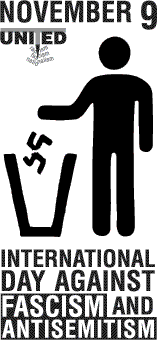Three years ago I wrote a post concerning all of my ancestors and where they were during the Revolution.
My ancestor David Van Every served a few months in the New York Militia, but he became a United Empire Loyalist like his father. And since there is no indication that his father's loyalties were ever in doubt, it might be fair to wonder if those few months in the New York Militia were entirely patriotic. He did have uncles and cousins serving patriotically, so it's possible, and there is some evidence he may have signed up for the militia honestly, which I will go into in another post, but there is enough doubt I knew I would feel uncomfortable using that service to claim descent from a Patriot.
I hadn't completely given up hope of finding a truly Patriotic ancestor, but figured the only branches would be the ancestors of my maternal great great grandmother, Sarah Hartley Denyer. Born around 1836, I'd have to research back to her grandparents and great grandparents.
I was plugging in some surnames into the Daughters of the American Revolution (DAR) databases recently for fun, and found a different ancestor, my fifth great grandfather,
Mark Fretz.
FRETZ, MARCK Ancestor #: A042599
Service: PENNSYLVANIA Rank: PRIVATE
Birth: 12- -1750 BEDMINSTER TWP BUCKS CO PENNSYLVANIA
Death: 2-24-1840 NEW BRITAIN TWP BUCKS CO PENNSYLVANIA
Service Description: 1) CAPT HENRY DARROCH, LCOL WILLIAM ROBERTS
2) 3RD BATT, BUCKS CO, MILITIA
As I wrote back in 2012, I had not found any evidence that my Mennonite Fretz ancestors had violated their dedication to pacifism. But the entry on the DAR database suggested Mar(c)k Fretz had served in the militia. So I went looking for other sources and
found this (Revolutionary War Military Abstract Card File, Pennsylvania State Archives):
It appears Mark Fretz paid fines for the privilege of not actively serving in the militia. If I am reading the card correctly, and if the abstract from the original record is correct, in 1780 he paid 600 pounds, which would have been a significant amount in 1780.
Here is DAR's definition of "
Acceptable Service" (SAR uses the same definition.)
- Signers of the Declaration of Independence
- Military Service...
- Civil Service...
- Patriotic Service, which includes:...
- Furnishing a substitute for military service...
So my ancestor, Mark Fretz, would be considered a Patriot under that definition. I am proud of his dedication to his religious principles, however, he didn't serve in the militia.
While I would like to find an ancestor who was an active Patriot, since the Daughters and Sons of the American Revolution organizations accept those pacifists who paid the fines as suitable ancestors, I wouldn't feel bad about using Mark Fretz for that purpose. Becoming a member of the Sons isn't on my high list of priorities right now, though I realize some kin might feel different. So the question arises: Could I, or a cousin, prove descent from Mark Fretz to the satisfaction of their guidelines?
The 'proof' cited in my database relies heavily on:
A Brief History of John and Christian Fretz and a Complete Genealogical Family Register With Biographies of their Descendants from the Earliest Available Records to the Present Time – by Rev A.J. Fretz of Milton N.J. copyright 1890. Mennonite Publishing Co. Elkhart, Indiana. pp. 326-333. [
read the transcribed text here]
My great-grandparents, Melvin and Margaret Jane (Denyer) Van Every appear in the genealogy, along with their first three children. I am confident I can prove up to there with vital records. However, looking at the guidelines on the lineage society websites, they rarely accept family history publications that don't contain source annotations. Regardless of how accurate I may feel the work to be, it isn't annotated. So, removing it as a source, what other sources are there?
They are likely to accept the lineage information provided within the
testimony to the Dawes Commission. (The Dawes Commission rejected their claims to be of Choctaw descent, but not their testimony of how they were all related to each other.) My grandmother is mentioned in the testimony, as she was born a few months prior. My second great grandmother, Sarah (Hartley) Denyer is also mentioned. She died two years prior to the testimony, but her brother testified. I have a copy of the 1854 marriage certificate for Sarah Hartley and Ebenezer Denyer.
Can I connect Ebenezer Denyer with Mark Fretz with acceptable records? The answer lies in Bucks County, Pennsylvania. Ebenezer was born there, as was his mother, Elizabeth (Sliver) Denyer, grandmother Barbara (Fretz) Sliver, and his great-grandfather, Mark Fretz. [His mother and grandmother both died in Texas, which would be helpful in proving that he is the same Ebenezer Denyer.] There is a good chance it could be done.


































